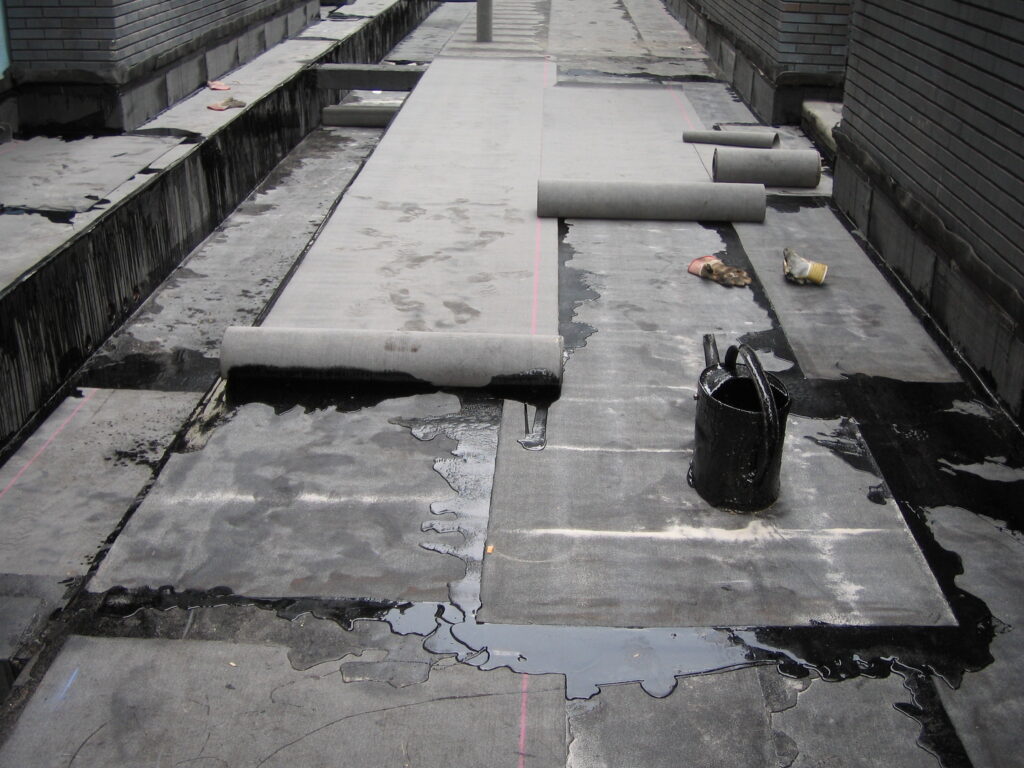Roofing industry prepared for the Building Quality Assurance Act
April 2, 2024The Building Quality Assurance Act (Wkb) requires burden of proof from building companies. Or rather: all companies active in the building sector, including specialised subcontractors.
Roofers and their suppliers have been KOMO certified for more than 25 years. For sloping roofs, certification is based on Assessment Guideline 1513 and for flat roofs on Assessment Guideline 4702. for this.
Roofers and their suppliers have been KOMO certified for more than 25 years. For sloping roofs, certification is based on Assessment Guideline 1513 and for flat roofs on Assessment Guideline 4702. In terms of quality, both assessment guidelines are the tip of the iceberg in their fields. They refer to execution guidelines and professional guidelines for the execution aspects of roofing. And they refer to other KOMO assessment guidelines for demonstrating the suitability and quality of materials to be used.
Checks are the core of supervision under KOMO
Erik-Jan de Bont, operational manager at the KOMO Foundation: “The roofing sector is one of the fields within the KOMO system in which the requirements of quality have been fully thought through. KOMO roof inspectors visit roofers on the building site, during the execution of the work. They do this unannounced based on the certificate holder’s weekly schedule.“ How often do they do this? “That varies with the company size and the square metres of roof a roofer completes, “ De Bont explains. “It starts with several times a year and increases to several times a month.”
In practice, checks form the core of supervision under KOMO. These are supported by checks on the burden of proof submitted by roofers. KOMO auditors randomly assess the certificate holder’s project files during company visits. The project files must show that even the projects that were not visited meet the quality requirements set by Assessment Guideline 1513 and Assessment Guideline 4702 respectively.
The Roofing Masters Foundation [Stichting Dakmeesters] and trade organisation VEBIDAK have been involved in the development of both assessment guidelines for many years. Their members can look forward to the arrival of the Building Quality Assurance Act without worrying. What the Building Quality Assurance Act requires from building companies has been common practice for them for years.

Dakmeester perfects app for Building Quality Assurance Act
Will Verwer is chairman of the Roofing Masters Foundation. The Roofing Masters Foundation, which is celebrating its 25th anniversary this year, is a platform of qualified roofers and leading producers of materials for sloping roofs. The individual members are all KOMO certified based on Assessment Guideline 1513. In recent years, expertise and professionalism in sustainable sloping roofs and building work performed according to the concepts of circularity has had the highest priority. For example, Assessment Guideline 9933 ‘Installation of solar energy systems attached to buildings and on top of buildings’ is being developed, together with SKG-IKOB, who are partners of the foundation and external parties.
We asked Will Verwer how the build-up to the Building Quality Assurance Act is going within the foundation. “In collaboration with SKG-IKOB, we started building an app as a roof file for internal quality assurance of the members in 2014. In the beginning mainly a checklist based on the Building Decree. This app turned out to be an excellent fit with the legislation of the Building Quality Assurance Act. It has undergone further perfection and fine tuning over the years and we are still working on it. Think here in terms of photos, a list of materials used, a risk analysis, a quality declaration of the products, a maintenance plan. All our members have received a mini iPad equipped with the app. It’s safe to say that everyone is now working with it. Our members are therefore ideally equipped for the new legislation!’
VEBIDAK: Building Quality Assurance Act is question of awareness
Deputy Director André van den Engel from VEBIDAK indicates that VEBIDAK members have been prepared for the Building Quality Assurance Act for years. “All members meet our criteria in terms of business operations, continuity and entrepreneurship. Very many members are in possession of the KOMO process certificate based on Assessment Guideline 4702 ‘Realization and Maintenance of Roofing Structures with Closed Roofing Systems’. The same applies to KOMO product certificates based on Assessment Guideline 1511 and Assessment Guideline 1309.
We have been working for many years with the Professional Guideline for Closed Roofing Systems, which is part of Assessment Guideline 4702. It’s actually a ‘check-off list’ for design, implementation, including photos, etc. We will further perfect this professional guideline in the coming months and make it available as a model to members.
We advise members to indicate in their quotations how they will prove that they meet the requirements of the Building Decree and soon the Living Environment Building Decree. For new building projects/work requiring a permit, the contractor will ask for demonstrable quality because of its burden of proof under the Building Quality Assurance Act. We are already prepared for this with certification and the professional guideline.
Our message to members in the run-up to the Building Quality Assurance Act is: you already have everything in order, quality assurance is not new to us and does not increase costs. It’s a matter of awareness!”

